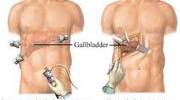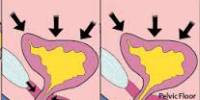Osteoarthritis is a degenerative joint disease that affects millions of people worldwide. It is characterized by the breakdown of the cartilage that cushions the joints, leading to pain, stiffness, and limited mobility.
A new possible target for treating osteoarthritis, a crippling joint condition that affects over 31 million Americans and is the primary cause of disability worldwide, has been discovered by researchers at Michigan Medicine.
A team of researchers led by Tristan Maerz, Ph.D., a biomedical engineer and assistant professor in the Department of Orthopedic Surgery at Michigan Medicine has uncovered previously unknown cell types in the joint that emerge after an injury and drive the onset of osteoarthritis.
Osteoarthritis is a very complex illness that manifests clinically as joint stiffness, decreased mobility and function, and, most significantly, ongoing pain.
Patients with osteoarthritis frequently suffer from the ailment for many years, and there are currently no cures or effective therapies available. The disorder is primarily treated with pain medication and end-stage joint replacement and can develop with age or be brought on by a joint injury.
The study, titled “Synovial fibroblasts assume distinct functional identities and secrete R-spondin 2 in osteoarthritis” and published in the Annals of the Rheumatic Diseases, examined the cellular and molecular events during the onset of post-traumatic osteoarthritis in joints.
This new study is a large step forward for osteoarthritis research on campus and across the country. We work closely with our surgeon colleagues to understand the clinical relevance of our laboratory research to maximize its potential impact on clinical care, which is our ultimate objective.
Kurt Hankenson
“We identified cell types that emerge in the joint after trauma, such as an ACL injury, and we can now associate these cells with the disease process,” Maerz said. “This allows us to view them as a treatment target for this devastating disease.”
Maerz and his team discovered these previously uncharacterized cells that appear in the joint following damage by using a cutting-edge gene sequencing technique called single-cell RNA-sequencing.
The findings also provided intriguing new targets for an efficient treatment by describing the molecular mechanisms that may activate these cells.
“Interestingly, these cells are not found in healthy joints, and we have to understand exactly what causes them to appear and how they may cause osteoarthritis,” said Alex Knights, Ph.D., a senior post-doctoral researcher in the Maerz Laboratory, who was instrumental in uncovering and describing these cells and their biology.
The Maerz Laboratory team members are now optimistic that targeting these cell types could be an efficient osteoarthritis treatment because they have now discovered many cell types that may be to blame for the illness.
“This research will further our understanding of the ways that osteoarthritis progresses, particularly after an injury to the knee,” said Elizabeth Dailey, M.D., an orthopedic surgeon treating end-stage osteoarthritis and joint replacement specialist at University of Michigan Health, who is working with Maerz and his team.
In order to delay or, ideally, prevent the onset of osteoarthritis, Maerz and his team are currently collaborating with biomedical experts to create new medication delivery systems that may be injected into joints after a traumatic injury.
This work will be done alongside Craig Duvall, Ph.D., a drug delivery and biomaterials engineering expert from Vanderbilt University, to create a slow-release drug to block the disease before it has a chance to take hold following joint trauma.
“This has the potential to yield a single long-lasting treatment which is necessary for patient compliance in a chronic disease like osteoarthritis. Local delivery also minimizes the possibility for side effects due to drug exposure in other tissues and organs, and it maximizes the drug benefit at the targeted disease site,” Duvall stated.
A drug delivery system based on biomaterials will be created and put to the test by the Maerz Laboratory to treat osteoarthritis.
“This new study is a large step forward for osteoarthritis research on campus and across the country,” stated Kurt Hankenson, D.V.M., Ph.D., a senior colleague of the Maerz laboratory and the associate chair for research in the Department of Orthopedic Surgery. “We work closely with our surgeon colleagues to understand the clinical relevance of our laboratory research to maximize its potential impact on clinical care, which is our ultimate objective.”
This work will also seek to understand how a certain molecular signaling pathway, specifically Wnt signaling, is involved in the early activation of joint cells after injury.
“For us to be able to develop a treatment that can be given immediately after a joint injury to block this disease process gives hope for the osteoarthritis patient,” Maerz said.
















